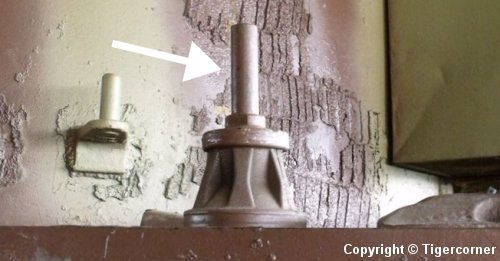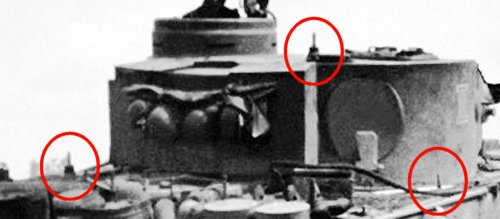Antenna bases
Steps 14 and 15 of the instruction sheet don't make it clear what you are supposed to do with the antennas (parts Q35 and Q36).

Antennas on Panzers could be removed and stored in long tubular holders. So, it was more common to see bare antenna bases, like this, than installed antennas.
The base comprises a flexible rubber foot and a metal pole. Unlike this museum example, the pole was always bare metal, to make electrical contact with the antenna.
Standard Tigers
The standard Early Tiger had one antenna base, on the right side of the hull roof. There was an S-mine launcher at the corresponding spot on the other side. The standard radio was the Fu 5, therefore the antenna rod was 2 meters long.
In this case you can either install one of the kit's rod antennas (of length 125mm), or you can install an empty base like the above.
Command Tigers
A Command Tiger carried two radio sets. An Fu 5 was in the turret, and a long-range radio was in the hull. Two kinds of long-range radio could be used, and they required different kinds of antenna with different electrical characteristics; therefore the hull had two antenna bases, one on each side.

This is a rare photograph with all three antenna bases visible.
Only one hull antenna could be used because only one radio set would fit in the hull. The right-hand base was for the "Star" antenna, as built in Step 15 of the instructions. The left-hand base was for a 1.4 meter antenna, as built in Step 14. This antenna, on the model, would be 87mm long.
The "star" antenna was the most commonly used one. But at the time of his famous photo shoot with Tiger "S04", Michael Wittman had the 1.4 meter antenna installed on it.